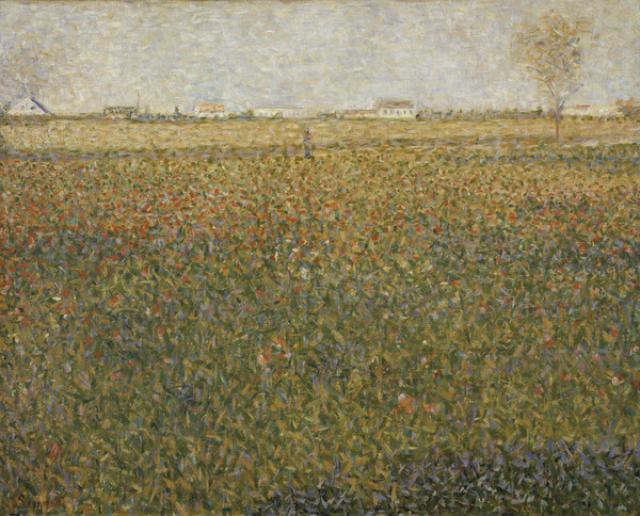Scotland's national art collection has welcomed a wonderful new painting by French artist Georges Seurat (1859-91). Dr Frances Fowle, the National Galleries of Scotland's Senior Curator of French Art, explores the painting's history and significance...
Young Woman Powdering Herself, c.1888-90, an unusual painting by the French artist Georges Seurat, has just been installed at the Scottish National Gallery on the Mound. It is on loan to the National Galleries of Scotland until the autumn of 2020 while the Courtauld Gallery in London undergoes a two-year transformation project, Courtauld Connects.
The Courtauld is home to one of the most important collections of Impressionist and Post-Impressionist art in Europe, thanks to the generosity of the textile tycoon Samuel Courtauld, who acquired outstanding examples of the work of Monet, Van Gogh, Gauguin, Cézanne and others during the 1920s.
The Seurat painting is one of the highlights of the Courtauld collection, and we are tremendously excited to show it in Scotland for the first time. It is a humorous and, it has to be said, slightly unkind portrait of the artist’s mistress, Madeleine Knobloch. She is dressed in her underclothes and Seurat deliberately contrasts her large curvaceous figure with the tiny table at which she is seated. She is applying make-up, and the painting and its almost scientific technique can be read as a conceit: a satire on the artifice of modern urban life.
Infra-red spectroscopy (IR) reveals that Seurat originally painted a face (said by some to be a self-portrait) in the frame on the wall, but was persuaded by a friend to paint it out and replace it with a vase of flowers. Indeed, only those closest to Seurat were aware of his liaison with Madeleine and since he died very early, at the age of only 31, the relationship remained a secret to the wider world.


Despite his brief career, Seurat was the inventor and leading exponent of a style of painting known as ‘divisionism’ or Neo-Impressionism, whereby the paint is applied using small dots of colour, often referred to as ‘pointillism’. The technique developed from impressionism and, like the Impressionists, Seurat painted landscapes and modern urban subjects: people walking in the park, at the circus or at the musical hall. Unlike the Impressionists, he preferred to work in the studio, often building up his finished compositions from a series of drawings and oil studies made out of doors. His manifesto painting, Sunday Afternoon on the Island of the Grande Jatte (Art Institute of Chicago) was exhibited at the eighth and final Impressionist exhibition in 1886, where it caused a sensation.
In the Courtauld painting Seurat has used his pointillist technique to create areas of light and shade, warm and cool colours and to explore contrasts between rounded and more angular forms. Seurat was interested in optical physics and was influenced by the theories of, among others, Eugène Chevreul (1786-1889), a French chemist, who applied his findings to wallpaper, textiles and even the tapestries at the famous Gobelins factory in Paris. Following Chevreul’s advice, Seurat experimented with colour contrasts and optical mixing, as well as exploring the emotional impact of colour and line. In this he was also influenced by the American physicist Ogden Rood (1831-1902), as well as the scientific aesthetics of Charles Henry (1859-1926).
A perfect example of Neo-Impressionism, Woman Powering Herself brilliantly complements the three works by Seurat currently in the National Galleries’ collection.
Visitors will now be able to appreciate all aspects of Seurat’s style: from the Seated Nude of 1884, a magnificent drawing in conté crayon; to a small oil study for The Bathers, Asnières (1884), to the larger La Luzerne, Saint-Denis, 1884-5, which clearly demonstrates Seurat’s transition towards Neo-Impressionism.
The Courtauld painting’s first owner was the well-known critic and art dealer Félix Fénéon, who first coined the expression ‘Neo-Impressionism’; in an interesting parallel, the National Galleries’ La Luzerne, was owned by the English critic Roger Fry, one of Courtauld’s chief advisors and the man who invented the term ‘Post-Impressionism’.
You can view Georges Seurat's Young Woman Powdering Herself at the Scottish National Gallery in Edinburgh from now until Autumn 2020.
